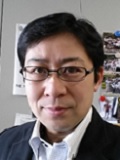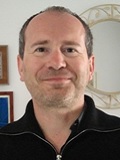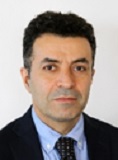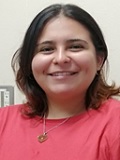- HOME
- RESEARCH
- Research Units
- Nanomaterials Processing for Medical, Cosmetic, and Environmental Applications
RESEARCH
Nanomaterials Processing for Medical, Cosmetic, and Environmental Applications
In this research unit, we would like to propose new processes for wastewater treatment and functional materials production with environmentally benign and economically feasible manners.
1- Oxidation process for wastewater treatment (g. wet air oxidation, hydrothermal catalytic treatment, pulsed discharge). We aim to develop and establish an efficient and feasible method for the quick degradation of harmful organic components in wastewater. Nitrogen-containing and sulfur-containing organic components are starting materials.
2- Biomass treatment to value-added chemicals and functional materials (e.g. saccharification, oligopeptide/amino acids production, liquefaction, solid waste for adsorption). We aim to investigate reaction behavior of various kinds of lignocellulosic biomass and marine biomass in subcritical and supercritical water to find out conditions where high yield of saccharides and amino acids can be obtained. As for residues, we also aim to establish the way how to prepare solid acid catalyst, solid adsorbent for odor, organic acids, sulfur-containing undesired volatile components.
3- Advanced extraction processes for medical, pharmaceutical, and agricultural fields (e.g. shock waves, ultrasounds pretreatment, microwave, supercritical CO2, subcritical water). We aim to develop an efficient and feasible method for extracting value-added and bioactive components with supercritical CO2 with or without pretreatment such as shockwave, microwave irradiation, pulsed discharge, etc.). We also aim to achieve micronization of the extracts to produce new products applicable to foods, pharmaceuticals, medicine, etc.
4- Nanomaterials production processes for medical and industrial fields (e.g. pulsed discharge, supercritical fluids). We aim to develop and establish an efficient, effective, and feasible method for the synthesis of nanomaterials where tuning of their characteristics will be possible by changing the initial parameters of the method. Furthermore, we intent to apply the synthesized materials in the industrial and biomedical fields.
Unit members
-
 Unit CoordinatorMitsuru SASAKI Website
Unit CoordinatorMitsuru SASAKI WebsiteAssociate Professor
Division of Biomaterials, Institute of Industrial Nanomaterials (IINa), Kumamoto UniversityJapan -
 Elisabeth BADENS
Elisabeth BADENSFull Professor
CNRS/ Aix Marseille UniversityFrance -
 Olivier BOUTIN
Olivier BOUTINProfessor
CNRS/ Aix Marseille University
*IROAST Visiting ProfessorFrance -
 Hamid HOSANO Website
Hamid HOSANO WebsiteProfessor
Biomaterials and Bioelectrics Division, Institute of Industrial Nanomaterials (IINa), Kumamoto UniversityJapan -
 Marleny D.A. SALDAÑA Website
Marleny D.A. SALDAÑA WebsiteProfessor in Food/Bio-Engineering Processing
Department of Agricultural, Food and Nutritional Sciences, Faculty of Agricultural, Life and Environmental Sciences, University of AlbertaCanada -
 Bushra AL-DURI Website
Bushra AL-DURI WebsiteReader in Hydrothermal Processing
School of Chemical Engineering, College of Engineering and Physical Sciences, University of BirminghamUK -
 Rodolfo MORALES IBARRA Website
Rodolfo MORALES IBARRA WebsiteAssociate Professor
Faculty of Mechanical and Electrical Engineering, Universidad Autonoma de Nuevo LeonMexico -
 Cinthya Soreli CASTRO ISSASI
Cinthya Soreli CASTRO ISSASIDr.
Faculty of Mechanical and Electrical Engineering, Universidad Autonoma de Nuevo LeonMexico
Achievements
Publications
Cinthya Soreli Castro Issasi, “In-situ Synthesis of Poly(N-Isopropylacrylamide) Decorated with Silver Nanoparticles Using Pulsed Electrical Discharge in Contact with Water Interface”, submitted for publication in Nanocomposites (2022).
Mitsuru Sasaki*, Yuji Miyagawa, Kouki Nonaka, Ryota Miyanomae, Armando T. Quitain, Tetsuya Kida, Motonobu Goto, Tetsuo Honma, Tomohiro Furusato, Kunio Kawamura*, “Nano-pulsed discharge plasma-induced abiotic oligopeptide formation from diketopiperazine”, submitted for publication in The Science of Nature (2022).
Masayo Nishizono, Cinthya Soreli Castro Issasi, Hiroyuki Mizukami, Mitsuru Sasaki*, “Comparison of Quality and Microstructure of Strawberry Powders Prepared by Two Different Drying Methods: Low Temperature Drying with Convection Dryer and Vacuum Freeze Drying”, Journal of Antioxidant Activity, 2(3), 10-22 (2022).
Mahmoud A Shouman, Ahmed H El-Shazly, Marwa F Elkady, Mohamed Nabil Sabry, Ramma Kamogawa, Koki Nonaka, Mitsuru Sasaki, Akimaro Kawahara*, “A hepatic sinusoids-based microtube reactor for (Z)-5-(4-hydroxybenzylidene) thiazolidine-2, 4-dione intermediate drug synthesis”, Chemical Engineering Science, 247, 116960 (2022).
Armando T Quitain, Elaine G Mission, Jonas Karl Christopher N Agutaya, Mitsuru Sasaki, Tetsuya Kida, “Thermal, hydrothermal liquefaction, and electromagnetic processes for biomass conversion,”, AZ of Biorefinery, 421-446 (2022)
Kotchakorn T.sriwong, Ramma Kamogawa, Cinthya Soreli Castro Issasi, Mitsuru Sasaki*, Tomoko Matsuda*, “Geotrichum candidum acetophenone reductase immobilization on reduced graphene oxide: A promising biocatalyst for green asymmetric reduction of ketones”, Biochemical Engineering Journal, 177, 108263 (2022).
Tomohiro Furusato, Mitsuru Sasaki, Yoshinobu Matsuda, Takahiko Yamashita, “Underwater shock 0wave induced by pulsed discharge on water”, Journal of Physics D: Applied Physics, 55(11), 115203 (2021).
Cinthya Soreli Castro Issasi, Kanae Mori, Rodolfo M. Ibarra, Mitsuru Sasaki*, Armando T. Quitain, Tetsuya Kida, Satoko Okubayashi, and Tomohiro Furusato, “One-Pot Synthesis of Thermoresponsive Poly(N-Isopropylacrylamide) Assisted by Pulsed Arc Discharge in Contact with the Water Interface for Wound Dressing Purposes”, ACS Applied Polymer Materials, 4(1), 74-83 (2021).
Kazuharu Yamato, Daigo Murakami, Shoji Hirayama, Yukiko Hoshino, Munehiro Hoshino, Mitsuru Sasaki*, “Food-grade vinegar production from the extract of sake lees obtained by subcritical water treatment,” The Journal of Food and Nutrition, 7, 203, 1-2 (2021)
Shamala Balasubramaniam, Shohei Ninomiya, Mitsuru Sasaki*, Armando T. Quitain, Tetsuya Kida, Marleny D. A. Saldana, “Carbon-based solid acid catalyst derived from Undaria pinnatifida and its application in esterification”, Algal Research, 55, 102272 (2021)
Kazuharu Yamamo, Katsuya Minami, Shoji Hirayama, Yuriko Hoshino, Munehiro Hoshino, Tetsuya Kida, Mitsuru Sasaki*, Yukihiro Mtsumori, “Recovery and liquefaction of nitrogen-containing component and minerals from food processing wastes of vinegar using subcritical water”, SN Applied Sciences, 2(12) (2020).
Grants
Study on chemical evolution by simulation experiments regarding the plasma processes and hydrothermal conditions with minerals under the Hadean Earth environments, KAKENHI Grant-in-Aid for Scientific Research (B) 2019-2022 (Ongoing).
Research on the aging of rice shochu using locally produced wood and its utilization, Project Research at Japan Sake and Syochu Makers Association 2021 (Ongoing).
Activities
Presentations
Ramma Kamogawa, Hiras T. Manalu, Mitsuru Sasaki*, Armando T. Quitain, Tetsuya Kida, “Hydrolysis of Rutin Using Solid Acid Catalyst Under Hydrothermal Conditions for High Yield of Quercetin” (ID: 3584338), Pacifichem 2021 Congress (online), Hawaii, US, 2021.
Daigo Murakami, Mitsuru Sasaki*, et al., “Liquefaction of sake lees by subcritical water treatment and application of the liquefied product as an additive for vinegar production” (ID: 3586194), Pacifichem 2021 Congress (online), Hawaii, US, 2021.
Ryohei Mori, Mitsuru Sasaki*, Tetsuo Honma, “Development of Detoxification Technology for Water Pollutants Using Pulse Discharge at the Air-Liquid Interface: Decomposition of Bisphenol A” (ID: 3584330), Pacifichem 2021 Congress (online), Hawaii, US, 2021.
Ippei Yamashina, Mitsuru Sasaki*, et al., “A Study on the Effectiveness of Pulsed Arc Discharge as a New Technology for Char Treatment Process in Whisky Production” (ID: 3588752), Pacifichem 2021 Congress (online), Hawaii, US, 2021.
Masayo Nishizono, Cinthya Soreli Castro Issasi, Hiroyuki Mizukami, Mitsuru Sasaki*, “Comparison of quality and microstructure of strawberry powders prepared by two different drying methods, low temperature drying with convection dryer and vacuum freeze drying”, The 16th International Student Conference on Advanced Science and Technology (ICAST2021) (online), Kumamoto 2021.
Cinthya Soreli Castro Issasi, Mitsuru Sasaki*, and Rodolfo Morales Ibarra, “Ex-situ synthesis of AgNps/PNIPAM nanocomposite using pulsed arc discharge method in contact with water interface”, The 16th International Student Conference on Advanced Science and Technology (ICAST2021) (online), Kumamoto, December 2021.
Ippei Yamashina, Tetsuya Kida, Mitsuru Sasaki*, Armando T. Quitain, “Elution Rate Analysis of Oak Surface Treatment and Aromatic Components by Pulsed Arc Discharge”, The 16th International Student Conference on Advanced Science and Technology (ICAST2021) (online), Kumamoto, December 2021.
Ryohei Mori, Mitsuru Sasaki*, Tetsuya Kida, Armando T. Quitain, “Decomposition of BPA Using Gas-liquid Interface Pulsed Discharge Plasma”, The 16th International Student Conference on Advanced Science and Technology (ICAST2021) (online), Kumamoto, December 2021.
FY2020
Shamala Balasubramaniam, Mitsuru Sasaki*, Quitain Armando, Tetsuya Kida, Marleny Saldaña, “Production of pyro-hydrochar from marine biomass, Undaria pinnatifida and its application as solid acid catalyst” (#AA999), The 51st SCEJ Fall R & D conference (online), September 2020.
Koki Nonaka, Armando T. Quitain, Tetsuya Kida, Mitsuru Sasaki*, Kunio Kawamura, Tomohiro Furusato, Tetsuo Homma, “Influence of operating parameters on the linear oligopeptides production from DKP with pulsed discharge” (#M206), The 51st SCEJ R&D conference (online), September 2020.
Koki Nonaka, Armando T. Quitain, Tetsuya Kida, Mitsuru Sasaki*, Kunio Kawamura, Tomohiro Furusato, Tetsuo Honma, “Effect of Some Parameters on The Conversion of Ala-DKP to Linear Oligopeptides Using Pulsed Discharge” (#6-17), The 15th International Student Conference on Advanced Science and Technology (ICAST) 2020 Kumamoto (online), December 2020.
Ippei Yamashina, Mitsuru Sasaki*, “Elution Behavior of Aromatic Components from Oak Surface Treated by Pulsed Arc Discharge” (#6-23), The 15th International Student Conference on Advanced Science and Technology (ICAST) 2020 Kumamoto (online), December 2020.
Ramma Kamogawa, Hiras T. Manalu, Mitsuru Sasaki*, Armando T. Quitain, Tetsuya Kida, “Hydrolysis of Rutin using solid acid catalyst under hydrothermal conditions” (#6-19), The 15th International Student Conference on Advanced Science and Technology (ICAST) 2020 Kumamoto (online), December 2020.
Ryohei Mori, Mitsuru Sasaki*, Olivier Boutin, “Decomposition of Bisphenol A Using Gas-liquid Interface Pulsed Discharge Plasma” (#6-22), The 15th International Student Conference on Advanced Science and Technology (ICAST) 2020 Kumamoto (online), December 2020.
- Units of World-leading Researchers
-
- Development of Nano and Supramolecular Materials
- RNA Biology
- Plant Cell and Developmental Biology
- Nano-Organics and Nano-Hybrids
- Nano-medicine and Drug Delivery System
- Nano-medicine and Theranostics
- Multiscale Modeling of Soil and Rock Materials Using X-ray CT
- Quantification of Three Dimensional Vascular Network
- MicroCT-based Quantification of Fibrosis and Vascularization in Pancreatic Tumor
- Advanced Structural Materials
- Microstructure Analysis and Grain Boundary Engineering
- Structure and Dynamics of Materials Using Quantum Beams and Data-Driven Sciences
- Hydrological Environments
- Nano-materials for Energy Applications and Environmental Protection
- Units of Young Researchers
-
- Quantitative Bioimaging
- Development of Novel Therapeutic Strategy Using Iron Targeted Upconversion Nanoparticles for Parkinson's Disease
- Deep Learning for Hydrology
- Environmental Impacts of Ionic Solutes
- Study of first-generation objects in the universe with radio telescopes
- Plant Stem Cells and Regeneration
- Development of Microbially-Aided Carbon Sequestration Technology
- Advanced Biomedical Evaluation System
- Bio-inspired Functional Molecular System
- Nanomaterials Processing for Medical, Cosmetic, and Environmental Applications
- Ferroelectric Photovoltaics
- Next-Generation Design of Structures







